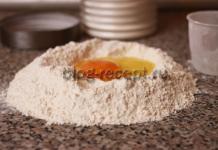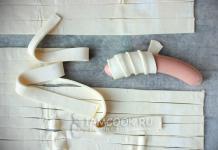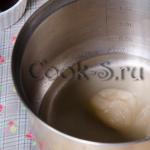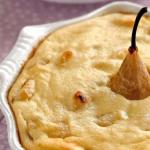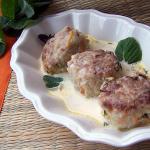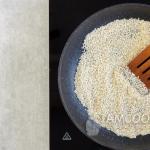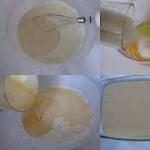At least once in our lives, each of us has come across such a thing as table decoration, be it preparing for a home feast or going to a restaurant, where the dishes on the tables are complemented by several cutlery. In fact, there are not many rules that you should know for proper serving. Before you understand how to properly arrange cutlery, you need to consider the dishes that will be served on the table. As a rule, plates, cups, glasses, glasses, spoons, forks and knives are placed on the table. You should start with plates, which you will then cover with other items. But let's deal with everything in order.
A few simple rules
Everything that is needed first should be located closest to make it convenient to take. And even if a ten-course menu is planned, this does not mean that the guest should have a whole mountain of dishes and all kinds of cutlery:
- Cutlery and utensils are always arranged in the order in which the dishes are served, according to what you are going to use first.
- Tableware is placed so as not to get confused in its use: the fork and knife are placed with the main dish, and the dessert spoon is on the right behind the plate.
- Always point the knife blade towards the cookware.
- A glass of water is placed above the knife.
- The forks are located on the left side.
- Spoons are always to the right of knives.
- When serving wine, there should be a corresponding glass behind the knife on the right. In case of filing several different drinks the rest of the glasses are placed there.
- Bread dishes are always served with Italian dishes.
- Spaghetti is eaten with a fork and spoon, and the butter knife is placed in the bread plate.
- If the menu includes serving soup, then the spoon for it is placed between the snack bar and the fish knife.
- If a fish dish is not on the menu, then a spoon can be used instead of a fish knife.
- In order to make it convenient to use any item, the ends of the handles along with the utensils should be placed two centimeters from the end of the table.
Basic table setting
Many people use the basic design to properly arrange cutlery on the table during a home dinner or lunch, when there is no need for a large number of different serving items.
Basic serving includes:
- A plate.
- Fork.
- A spoon.
- A napkin.
- Glass for water.
Informal table setting
If you are planning a friendly brunch or just an informal gathering of friends and family, you can set up the table in an informal manner.
In this case, the serving might look like this:
- The napkin is placed in the place where the plate with the main dish will later be placed.
- The table and snack fork is located to the left of the plate in the order in which the dishes are planned to be served.
- The dessert spoon, tablespoon and knife are placed to the right of the plate, and in the following order: knife, dessert spoon and, finally, tablespoon.
- Dishes for snacks are placed to the left of the forks.
- The pie plate and butter knife are placed above the forks.
- A glass for wine, a glass for water and a cup for coffee or tea is placed above the appliances lying on the right.
Formal table setting
This table decoration is more suitable for a holiday or some serious events. Let's imagine that you plan to serve a main course, fish, soup and oysters.
Important! Do not forget that all dishes and cutlery are arranged in the order in which the dishes will be served.
Your serving will look like this:
- The appetizer fork, the fish fork, and the dinner fork go in that order to the left of the plate.
- The soup bowl is placed on the plate in which you will be served the second course.
- The oyster fork is located to the right of the plate from the very edge (only this fork is placed on the right).
- Next, as you approach the utensils: a tablespoon, a fish knife, a table knife.
- The pie dish and butter knife are placed on the left above the forks.
- Glasses of red and white wine, a glass for water are placed above the appliances on the right.
Important! After dinner or lunch is completed, the table is set at the appropriate level for dessert, tea or coffee.
Materials
In addition to the basic rules on how to properly arrange cutlery, you should also know about the materials from which they are made. Let's look at them in detail:
- Wooden - used for trips to nature, but not for daily use. Wooden products absorb moisture, are short-lived, and are not very convenient to use.
- Aluminum - were common in the past. Today there is debate about the dangers of aluminum, but be that as it may, such objects too quickly lose color and shape, and are also fragile.
- Stainless steel is one of the most popular. They are made of medical stainless steel, which does not enter into chemical reaction with acids, salts and alkalis.
Important! Typically, “18/10” stainless steel is used, containing 18% chromium and 10% nickel.
- Cupronickel - this material is an alloy of nickel, copper and manganese. Such items stopped being produced back in the 50s. Today, similar products are made from nickel silver (it is softer and contains zinc) - they are coated with gold, silver or blackened.
Important! As a rule, on the back of such products there is an MNC marking.
- Silver ones are very expensive and are a source of pride. The devices themselves are quite heavy, so it cannot be said that using them every day is very convenient.
Important! At the end of the serving, there is an arrangement of flower vases, sets with different spices and other decorative elements. Pepper and salt should be placed in the middle part of the table - they should be placed on special stands. It is also allowed to place bottles with sauces, vinegar and vegetable oil.
Video material
Now you are ready not only to decorate the festive table comfortably and beautifully, but also to surprise your loved ones with a pleasant setting for ordinary weekday dinners.
Indeed, it may arise, since in modern restaurants and the cafe table is not always set in advance in anticipation of guests. If all the cutlery is prepared, and you sit down at the table, where everything is already laid out, then the fork will definitely lie with the tines facing up.
But if you came to a cafe or just waited for your turn at a table, it often happens that the waiter cleared the place just before you took it. Of course, he didn't have time to table, perfectly arranging the forks and spoons in the right place.
The fork should be held lightly, using the index and thumb to lightly press it against the bent middle finger.
In this case, the devices are often brought wrapped in a napkin. This is a sign that the fork and fork are perfectly clean, and you can be sure that your meal is hygienic. If the fork is wrapped in a napkin, then it can be placed either upside down or down. Usually they are not visible at all, you can only guess from the outlines of the package where the teeth are. It turns out that placing a fork with the teeth down on the table is only permissible in one case: if it is served wrapped in a napkin.
Using a fork
The fork is usually used as the main utensil for most dishes, with the exception of soups, and the spoon and knife act as auxiliary ones. But sometimes the fork acts as an auxiliary device. For example, if you need to cut a piece of meat, then take a fork in left hand(to the right, if you are left-handed, and in the future, all recommendations for left-handers should be reversed), and the knife to the right. Then cut a piece without spreading your elbows out to the sides.
Next, you should also act according to the American or European styles. The American way means that you will still be your right hand. Place the knife on the edge of the plate, and then take the fork in your right hand, bringing it to your mouth with the teeth facing up. With the European method, you can either continue to grip the knife in your right hand or not, but you will have to eat with your left hand. The fork is held with the tines down.
In the simplest case, the fork is placed to the left of the plate, and the spoon and knife are placed to the right.
If you break away from your meal to talk, then, according to etiquette, you cannot put your fork on the table. And here it is just important whether you hold it with your teeth up or down. There are two styles: American and continental, or European. In etiquette American style The fork is held with the tines up, and if European standards are followed, with the tines down.
It is not customary to place your fork on the table or plate until you have finished your dish. But if for some reason you still want to put down your fork and finish eating later, then you should not put the dirty cutlery on the tablecloth. It is placed on the edge of the plate, diagonally. The direction of the teeth is not important in this case. If you want the waiter to replace your plate and cutlery, place them parallel to the edge of the plate so that, if you imagine the plate as a dial, the handles would be in the area of the number 4.
Proper table setting, corresponding to the event, occasion and time of day of the feast, will allow guests to feel satisfaction from both the event and the meal itself.
Proper table setting not only emphasizes the hostess’s delicate taste, but also shows her respect for guests and household members.
The table is set taking into account the occasion, menu, theme and time of day. At the same time, the purpose of any serving is to provide guests with a comfortable and pleasant pastime and convenient access to all the dishes presented.
Basic rules for setting the table with cutlery at home
The first thing you need to do is choose and lay tablecloth. For rectangular table take a tablecloth 50 - 60 cm longer than the tabletop. If round or oval table- 100 - 110 cm wider than the diameter of the tabletop.
Calculate the length of the tablecloth so that its edges are 30–50 cm below the bottom surface of the table.
For homemade lunch will be needed A plain white tablecloth, but other calm pastel colors will also work.
IMPORTANT: It’s good if the color and texture of the tablecloth is in harmony with the color and texture of the curtains, upholstery of the sofas and armchairs in the room. In any case, the tablecloth should be ironed flawlessly.


When the table is set, arrange the cutlery. First of all – glass and porcelain plates and dishes. Behind them - knives, spoons, forks and other necessary devices.


Glass and crystal are placed last. glasses, shot glasses, goblets.

 Correct sorting scheme festive table
Correct sorting scheme festive table
Arrange the equipment this way:
- any knives place on the right, so that the cutting part faces the plate
- tablespoon also place it on the right, so that its convex part is at the bottom
- forks after setting the table, they should be on the left, with their teeth pointing upward
- dessert spoon should be behind the plate, its handle turned to the right
IMPORTANT: When serving with cutlery, you must take into account that they will be used from the outer edge and the items will be changed depending on the serving of new dishes. For convenience, you should place objects at a distance of about 1 cm from each other.


Basic rules for setting the table with dishes at home
Plates are placed on the table first, and glasses, shot glasses, glasses - last.
Arrange the plates in this order:
- Medium plate(snack bar) place it so that there is 2.5 - 3 cm left to the edge of the table.
- Pie (bread) plate Place on the left, leaving about 10 cm.
- If a change of dishes is expected, place it under the snack bar dinner plate small size, Having previously laid a napkin under it.
IMPORTANT: Depending on the type of first dish, choose a plate for it. If cream soup or broth will be served, take a bowl; if thick soup or borscht, take a large deep plate.
Wine glass put it on the right water glass- on the left, but they must be in one line. Two rows of drinkware are allowed if a grand event is being prepared with a large number a variety of dishes and drinks.
IMPORTANT: Dishes for table setting must be prepared in advance. To do this, wash it, dry it, and wipe it thoroughly with a towel. The main thing is that the dishes look perfect before serving. Stains, drips, cloudy or opaque appearance are unacceptable.


Folding napkins for table setting
Napkins– an integral attribute of any feast. No matter how beautifully folded paper or linen napkins are, do not forget that they, first of all, serve for the convenience of guests.
Therefore, any napkin should be located in the most accessible place, and even the most intricate napkin shape should be easy to unfold.


The pictures and videos show how to quickly and beautifully make a flat or three-dimensional figure from a napkin.






IMPORTANT: Volumetric figures made from fabric napkins will keep their shape well, and the napkins themselves can be easily washed off if they are starched.
To starch a linen napkin:
- In 0.5 l cold water add 1.5 tbsp. starch and stir until you get a homogeneous cloudy white solution that does not contain lumps.
- Boil 1 liter of water, pour into the prepared solution and stir.
- Cool and strain through cheesecloth.
- Dip clean, dry wipes into the solution and wring out a little.
- Hang the napkins to dry without using clothespins.
- Start ironing between two towels as soon as all the water has drained from the napkins.
IMPORTANT: According to the rules of etiquette, beautifully folded napkins should be used at formal feasts. For other events, the napkins can simply be placed neatly in a glass or coaster.
Rules for setting the table for breakfast according to etiquette
To properly set the table for breakfast, follow the following pattern::
- Set out the appetizer plates.
- Place cups and glasses.
- Place a teaspoon on a saucer.
- Place an egg rack on the appetizer plate, and don’t forget about a special spoon.
- Also place a deep porridge bowl on the snack plate.
- Place a coffee pot or tea with a hot drink in the middle of the table.
- Serve sandwiches or croissants on a large flat platter.
IMPORTANT: On the table set for breakfast, a saucer for jam or honey, a butter dish, a salt shaker and a sugar bowl would be appropriate.


Rules for setting the table for dinner according to etiquette
There are several options for setting the table for lunch, since lunch itself can consist of a different number of dishes:
- Place a small plate on a table covered with a tablecloth.
- Place a deep one on a shallow plate for the first course.
- Add a snack plate if you will be serving dishes that cannot be eaten from shared dishes.
- Place a fork to the left of the plates, a soup spoon and a knife to the right, the knife should be closer to the plates, and the spoon closer to the edge of the table.
- Decorate your snack plate with beautifully folded napkins.
- Place a salt shaker and containers with the necessary spices and seasonings in the center of the table.
- Place wine glasses and water glasses on the right and left, respectively.
- Place a bottle of alcoholic drink on the table previously uncorked.
- Fresh flowers in the center of the table will decorate and complement even an imperfect table setting.
- Serve the oil in a butter dish.
- Serve the first one hot in a tureen.


Rules for setting the table for dinner according to etiquette
Dinner, whether invited or a quiet family dinner, is always associated with warmth and comfort. Therefore, it is important for the hostess not only to set the table correctly, but also to complement the table setting with appropriate details.
- Choose a tablecloth (suitable with a small pattern).
- Place two small plates one inside the other, and to the left of them place a plate for bread.
- To the left of the plates, place the forks with their tines up, and to the right, place the knives with the blades facing the plate.
- Place dishes for alcoholic drinks to the right of the plates, for water - to the left.
IMPORTANT: Table setting for dinner is similar to lunch setting, but differs in the absence of a deep plate and spoon for the first course. This dish has no place on the table in the evening.


Beautiful festive table setting: rules
Festive table Usually they serve it not only for their family members, but also for invited guests.
There are several rules for setting a festive table, following which any hostess will be able to show her ability to welcome guests at the highest level:
- Tablecloth for the festive table it should be perfectly clean and ironed. It is advisable to spread a thick cloth on the table under the tablecloth, which will prevent the dishes from clanking if they accidentally fall, and will also protect the table surface from spilled liquids. However, it is permissible not to cover the table with expensive wood at all.
- Crockery and cutlery that are used for serving must be from the same set. It is unacceptable to serve the festive table with dishes different colors and sizes. The cleanliness and shine of dishes must be impeccable.
- How plates and cutlery need to be laid out only in the order in which the hostess plans to serve the dishes.
- Shouldn't be on the table excess dishes and cutlery. Items “just in case” are not needed, but will only spoil the look of the table.
- All alcoholic drinks are served in pre-opened bottles, but champagne is opened immediately before serving.
- One cloth and several paper ones should be prepared for each guest. napkins.
- First course The hostess pours it into plates from the tureen for the guests. One of the guests or household members can help her serve filled plates. This must be done by approaching everyone present at the table from the right side.
- Second course Guests put it on their plate from the common dish.
IMPORTANT: The generally accepted order of serving dishes at the festive table is: appetizer, first course, fish dish, meat dish, sweet dessert and fruit, tea or coffee.
The presence of thematic decor in the center of the festive table will emphasize the efforts of the hostess and give the feast coziness and warmth.


Banquet table setting rules
Banquets arranged in honor of a major holiday, such as an anniversary or wedding. The very concept of a “banquet table” implies that the event will take place in a specially rented banquet hall, and waiters will serve the guests.
The attributes of the banquet are:
- various decorations (balloons, bows, special drapery)
- entertainment for guests (live music, performances, toastmaster or host of the event)


Banquet table must correspond to the situation, occasion and general mood. The main rules for serving it:
- Are used folding tables , which are arranged depending on the number of guests, the features of the hall, and the type of service.
- The tables are set white banquet tablecloths, leaving slopes from the edges of about 25 cm.
- First of all they place small plates. They are placed in such a way that the distance between adjacent plates is at least 60 cm, but not more than 80 cm, and the distance to the edge of the table does not exceed 1 - 2 cm. Snack plates are placed on top, and pie plates on the left.
- Right put knives, with the blades facing the plates. All utensils located on the right: table knife, fish knife, table spoon, snack knife.
- To the left of the plate: table fork, fish fork, two snack forks.
- Dessert fork and knife placed behind the plate.
- Also behind the plate there is wine glass, to the right of the wine glass - glasses for stronger drinks.
- Cloth napkins placed on plates, after giving them a beautiful appearance.
- Short flowerpots with fresh or artificial flowers placed evenly in the center of the table.
- Can also serve as table decoration vases with fruits and grapes.
IMPORTANT: Every little detail is important for a banquet table, so setting it takes a lot of time.


Rules for table setting in a restaurant
There are two serving options in the restaurant:
- banquet
- preliminary (corresponding to the order from the menu) with additional serving
The name of the “preliminary” serving speaks for itself - the serving will require additions after guests choose dishes and place an order.
Items that must be present on the guest's table according to the rules pre-serving:
- table knife, plate, fork
- wine glass
- fabric napkin
- additional accessories (spices, folding menu cards, table number in the form of a sign, ashtray, etc.)


Rules for serving the dessert table
Dessert time is the end of the main feast. All dessert utensils are served shortly before the dessert itself is served. Place a fork to the left of the dessert plate and a spoon to the right.
The dessert is served on plates-stands. If it is chilled, it can be served in bowls or bowls.
Rules for serving a sweet table
Serving a sweet table has no fundamental differences. They put a plate and cutlery in front of it. Place a deep plate on top of a flat plate for liquid sweets.
On the right side of the plates there are wine glasses and glasses. You can display fruits or various cakes on the shelves.
Before inviting guests to the table, it is covered with a tablecloth, preferably in soft colors.
A tea cup larger than a coffee cup is placed on a saucer. The spoon is placed on the saucer. A dessert plate is placed to the left of the cup. For sugar, use special tongs.


Rules for serving the tea table
The main rules for serving a tea table coincide with the basic rules for serving described earlier, however, several recommendations will help create a more comfortable environment for guests invited to tea:
- The color and style of the tea set should match the color and texture of the tablecloth.
- It is advisable to have a composition of fresh flowers on the table.
- If classic Russian tea drinking is expected, it would be appropriate and at the same time original to serve tea directly from the samovar, which is placed to the left of the hostess of the house or placed on a separate table.
- Milk is served in a milk jug for tea. It is advisable to place the milk jug on a plate so as not to accidentally spill its contents on the tablecloth.
- The cake, roll or pie is cut into portions. Fruits are placed in vases, sweets in candy bowls. The berries are laid out in bowls or plates.
- Alcoholic drinks are allowed at the tea table.
IMPORTANT: Tea drinking is a time for relaxed intimate conversations. Even if the tea table setting is not ideal, the guests have a positive attitude and kind cozy atmosphere They will brighten up the evening and make small imperfections invisible.


Rules for serving a buffet table
Buffet carried out at official receptions, corporate events, presentations.
Features of its implementation is that many people may be present at the event, but neither a large hall nor special financial costs you won't need it for this.
IMPORTANT: The buffet is held in the evening, it lasts a maximum of 2 hours. The purpose of the event is to communicate and make new acquaintances. It is considered bad form to be one of the first to eat and the last to leave the buffet table.
Features of table setting for a buffet table:
- The tables are covered with white tablecloths and arranged in such a way that guests can move freely around the room. A separate table is prepared for dirty dishes.
- There are no chairs, because during the buffet, guests themselves come to the tables and choose food.
- Buffet menu - appetizers, light salads. Champagne and wine are acceptable drinks.
- Wine glasses and stacks of plates are placed at the ends of the table, forks are placed in special stands next to the plates. Guests will bring their own dishes.
- The main thing is to leave enough space at the edges of the tables.
- Napkins are placed in holders and spaced evenly.
- Be sure to decorate the tables and hall with flowers and fruit baskets.
- Water and juice are poured into glasses, alcohol is left in bottles, having previously uncorked them.
- The buffet menu consists of dishes that you can easily put on your plate: canapés, sandwiches and light snacks.


Rules for setting the table for a birthday
Birthday- a holiday that can be celebrated both in narrow circle relatives and closest people, as well as noisy company friends, acquaintances and good acquaintances.
Depending on what kind of celebration the birthday person wants to have, you should choose the venue, menu, and type of service.
- If planned quiet family dinner, then they serve either a festive table or a table for dinner.
- If the birthday takes place in a cafe or a restaurant with a pre-agreed menu, a banquet table is served.
- Those who decided on their birthday visit a restaurant, but have not pre-booked a table or certain dishes, standard restaurant pre-service will be expected.


Table setting rules for children in pictures
From childhood, you need to teach your child the basics of etiquette. In adult life, this knowledge will come in handy more than once. To ensure that your child doesn’t have any difficulties when learning table manners and the basics of table setting, you can conduct classes in a playful way and use special pictures.


Knowing and putting into practice the rules and features of table setting, you can feel confident when inviting guests or setting the table for a family celebration.
Joint feasts in a cozy, beautiful decorated table will bring positive emotions owners and their guests and, perhaps, such feasts will turn into a good family tradition.
Video: How to set the table correctly?
Compliance with table setting etiquette primarily indicates good attitude the owner of the house to the guests. However, in lately You can find a properly set table only at various kinds of official events, banquets or buffets. You need to please your loved ones on ordinary days, creating a festive atmosphere with the help of colorful decorations. In this article we will talk about the basic rules of table setting, various directions and interesting ways decoration.
Table etiquette or how to properly set the table
If you are invited to a dinner party for the first time, the number of cutlery and their order can be perplexing. A well-organized festive dinner is proper serving cutlery on the table, observance table etiquette and decoration appropriate for the event. To learn how to use cutlery correctly, you need to understand a few points.
Rule No. 1: forks, spoons, knives are placed in the order in which the dishes are served (appetizers, soup, meat or fish, fruit, dessert). Each item on the table plays its role.

General rules for table setting suggest the following tableware arrangement patterns:
- a snack plate is placed in front of the guest;
- on the left is a cake plate or paper napkin with additional cutlery;
- on the right are knives and spoons, and on the left are forks;
- Wine glasses and glasses, as well as dessert cutlery, are placed in front of the main plate;
- There is a napkin on the appetizer plate.

Rule No. 2: serving items should be used for their intended purpose. Devices located along right side, take and hold while eating in the right hand, and those on the left - with the left hand.

The question of how to use a knife deserves special attention. It is necessary that the end of the handle rests on the palm right hand, the thumb and middle fingers clasped the base of the knife from the side, and the index finger lay on the surface of the handle. This will make it more convenient for you to cut off the desired piece of meat or fish, and you won’t have to blush in front of strangers.

Rule No. 3: table decoration involves the use of all kinds of decorative elements: a white ironed tablecloth, lace napkins, colorful runners and fragrant flowers.

To better understand the principle of table etiquette, we recommend that you familiarize yourself with the video material presented below. You will learn a lot of useful things and will forever forget about the problem of improper use of cutlery.
On video: serving and serving rules.
Scheme and sequence
There is only one the right option table setting, because each country has different traditions regarding this issue. Much also depends on the menu, the number of dishes and their focus. Do not forget that depending on the time of day, the design of the kitchen or dining room can vary greatly.
It is customary to set the table according to next order: tablecloth, dishes and cutlery, wine glasses, glasses, glasses, napkins, decor.

Let's start with the tablecloth - it should be perfectly ironed and match the nature of the event. So, for a dinner party, models in neutral shades are suitable, and for a Sunday tomorrow with the family, there is nothing better than a bright tablecloth and napkins with unusual designs. Average length of this product is 25 cm. This figure is far from accidental - an excessively large descent of the tablecloth will look sloppy, and a small one will look awkward.
The smoothed fabric should cover the entire surface, and the corners should fall against the table legs, covering them evenly.
 Choose a tablecloth that is the right size
Choose a tablecloth that is the right size Next comes the arrangement of dishes and cutlery. In a number of European countries, and in Russia too, it is customary to first display porcelain and glass plates, saucers, wine glasses and glasses. When setting the table, it is important to consider that all items will change depending on how the dishes are served. That is why it is better to place dishes and cutlery at a distance of 1 cm from each other, starting from the edge of the table. 
Related article: We set the table with taste: selection of dishes, cutlery and accessories [stylish sets]
Selection and placement of tablecloths and runners
Every housewife keeps an elegant white tablecloth in her closet. However, you should not limit yourself to just one model; now in stores there is wide choice products of the most different sizes, colors and style. For rectangular tables tablecloths 50 cm longer than the tabletop are suitable, and for round or oval ones - 100 cm wider than the diameter of the table.

Designers insist that the color of the tablecloth be combined with the shade of the curtains and the overall style design premises. The main thing is to iron the fabric well, and the choice of colors depends only on the preferences of the residents of the house. You can choose a traditional beige or white bed, or choose a more custom option.

Another new way to decorate a table is to use plain table runners and placemats. You can see examples of such decoration in the photo below.





Plates placement
First, deep, wooden or salad plates are placed on napkins or special tracks. Not far from them are tea utensils and dishes for desserts. The distance from the edge of the table to the dishes should be about 1.5-2 cm. It is also recommended to place paper napkin under the appetizer plate so that it does not slide on the tablecloth.

Next in order is the layout of the cutlery. According to the rules of etiquette, they are laid out according to the number of courses and placed with the back side facing the table. On the right are spoons and knives, on the left are forks. In most cases, there is one set of cutlery for each person.

If you want to amaze your guests, you can additionally set the table with bright glasses, glasses, special forks, tea and dessert spoons.

Serving glasses, glasses, wine glasses
The plates are followed by glasses - they are arranged from largest to smallest. The choice of items depends on the guests' preferences regarding certain drinks. These can be glasses for water, glasses for white or red wine, glasses for juice, as well as glasses for strong drinks.

Glasses are placed on the right, glasses on the left, forming an even line. It is allowed to arrange dishes and cutlery in two rows if there are a large number of participants in the event.
Before serving glasses on the table, make sure the dishes are clean. All items must be thoroughly washed, wiped with a towel and made sure there are no chips or other defects.

Selecting and serving napkins
Classic table setting involves the use of plain napkins in neutral shades. As with the arrangement of cutlery, there are no clear rules for the placement of napkins. They can be beautifully stacked next to a snack plate (designed for bread, tarts and salads) or placed in a water glass, decorated with decorative rings and ribbons.

If you're setting the table for dinner, simply place napkins on the side of each plate, as shown below.

On video: how to properly set the table.
Table decor (finishing)
An excellent table decor option is a tablecloth made from synthetic material. This solution is suitable for both home gatherings and a festive dinner, the main thing is to choose the right color. It is easy to care for such a tablecloth - it does not wrinkle, does not wear out and retains its original appearance for a long time. appearance. As an addition, fabric napkins, plates, and lace runners are used.

To make your living room interior elegant, cozy and unforgettable, place a bouquet on the table fresh flowers, a bowl of fruit, an antique sugar bowl and crystal glasses.
Related article: Table setting ideas at home: options for different occasions | +88 photos

Cutlery in modern style They are distinguished by a variety of shapes, shades and their unique functional features.

Types of serving
The table decoration may vary depending on the time of day and the nature of the festive dinner. In this case, banquet, buffet, tea and coffee serving are distinguished. However, certain differences exist. Breakfast requires a minimum number of dishes to serve the table, and during dinner there is always a large number dishes and cutlery.
For breakfast (+ Sunday breakfast)
This is the simplest type of table setting. Snack plates are placed first, then cups, glasses and small saucers. A teaspoon is placed on top of the latter. If your family uses egg cups or butter bowls, don't forget a teaspoon. A deep bowl (for porridge or cereal) is placed on a snack plate.

Sunday breakfast cannot be imagined without tea, which is why there is a coffee pot or teapot in the center.

You can decorate the table with flowers, unusual napkins and various decorative elements. Family Sunday breakfasts are becoming a good tradition in many homes; they bring loved ones closer to each other. The key point in setting the table for breakfast is the creation good mood and convenience while eating.

Dining
There are several types of table settings for dinner. It all depends on the number of dishes and their nature. Cover the table with a white tablecloth, place one flat and one deep plate (for soup or salad). If there are dishes on the menu that cannot be eaten from shared dishes, add a snack plate. Arrange cutlery according to proper etiquette. Beautifully folded napkins are perfect for table decoration.
A distinctive feature of the table setting for dinner is the installation of a salt shaker and other items for spices and seasonings.

Full evening
You can set the table not only for family members, relatives or friends, but also for unfamiliar guests. Preliminary serving in accordance with all canons is the key to the success of any dinner party, because everyone should be comfortable and comfortable. Table decor creates special atmosphere, which is conducive to sincere conversations, wonderful memories and plans for the future.

For the holiday to be a success, it is necessary to observe following rules table etiquette:
- A perfectly clean, ironed tablecloth. It is advisable that the product be made from thick fabric(this will prevent the dishes from clinking when dropped and will protect the surface from spilled liquid).
- To decorate a festive table, it is not acceptable to use different color scheme dishes and cutlery. Give preference to monochromatic options from one set. All decorative elements (vases, coasters, napkin rings) should be sparkling clean, the same goes for dishes.
- It is prohibited to serve corked bottles of champagne or wine. All alcoholic drinks are served in open bottles and then poured into wine glasses. One cloth napkin is placed next to the glasses.

Banquet room
Banquet service is not much different from a full evening meal, but there are some peculiarities of this type registration So, shallow plates are placed at a distance of 1 cm from each other, starting from the center, first on one side, then on the other. They should be clearly opposite one another. Snack and pie saucers are placed on these plates. The next step is to place the cutlery at a distance of 0.5 cm from the shallow plate.
| Tablespoon | Served with soup, has an oblong shape | |
 |
Broth spoon | About the size of a dining room, but round in shape |
 |
Dessert spoon | Served for desserts that do not require cutting, that is, not cakes and pies, but mousses, puddings, etc. |
 |
Teaspoon | For tea, everyone understands it |
 |
coffee spoon | For coffee |
 |
Ice cream spoon | This spoon is small, like a coffee spoon, but with a long handle. |
 |
salad spoon | They put it in a salad bowl so that everyone can put a portion on their plate. |
 |
Caviar spoon | A small spatula, often shell-shaped |
 |
Pate spoon | Designed for transferring pate onto a plate |
 |
Scoop spoon for sugar bowl | No comments |
 |
Spoon - scoop for sauces | They put them in gravy boats |
Forks
 |
table fork | For any main courses except fish |
 |
Dessert fork | For cakes and other hard desserts |
 |
Fish fork | For fish |
 |
Spaghetti fork | The fifth tooth allows you to conveniently hook long pasta |
 |
Sprat fork | A fork with four prongs and a bridge is placed in a common saucer so that guests can put sprats on their plate |
 |
Crab and seafood fork | A two-pronged fork that is useful for eating oysters, crayfish, crabs and snails |
 |
Lobster fork | Fork with two small tines and a long handle, used for lobsters and lobsters |
 |
Oyster and mussel fork | Its left clove is wider than the other two and with its help it is convenient to separate meat from shells |
 |
Herring fork | A small fork with two teeth that are curved to the sides. Used to serve herring rather than food |
 |
Salad fork | Placed in a common salad bowl |
 |
Cocotte fork | Three-pronged fork for mushroom julienne |
 |
Lemon fork | For transferring the sliced lemon |
 |
Olive fork | A very convenient fork, shaped like a spoon with a hole. |
 |
Fruit fork | With three prongs, served with fresh, sliced fruit. Can be replaced with a regular four-prong dessert fork |
Knives
 |
Table knife | For main courses, except fish |
 |
Snack knife | For any type of snack |
 |
Meat knife | Knife with serrations. Placed in a common dish on which a large piece of meat is served (whole pig, chicken, ghoul), so that everyone can cut off the right piece for themselves |
 |
Fish knife | It cannot be confused with anything, it has a curly shape - a spatula |
 |
Cheese knife | Has two teeth curved upward, used for slicing cheese |
 |
Butter knife | A small knife with a round blade that is placed in a common oil dish |
 |
Fruit knife | Served if there are unpeeled fruits on the table (apples, oranges, etc.) |
Forceps
 |
Ice tongs | Placed in a common ice bucket |
 |
Pastry tongs | Place on a plate with sliced cake or cookies |
 |
Asparagus tongs | Asparagus tongs. They are very convenient to grab asparagus |
 |
Salad tongs | Located in a common salad bowl |
 |
Spaghetti tongs | Needed if a shared dish of spaghetti is placed on the table |
 |
Lobster tongs | Served with a special fork, separately for each guest. Used to break claws |
Plates
 |
Table plate (deep and shallow) | This is for lunch, two are served at once if a change of dishes is provided. Deep is placed on top |
 |
Snack plate (deep and shallow) | Placed next to the dining room |
 |
Dessert plate (deep and shallow) | Served separately when the dessert table is served |
 |
Pie plate | Placed next to the dining room, bread and buns are placed in it |
 |
Fish plate | It has an oval shape. She is served a table only if each guest is served a whole fish. |
 |
Chill plate | For mushroom julienne |
 |
Menagerie plate | Rarely used in classic table settings. Basically, they are placed where the buffet is served, so that you can get several different dishes at once. |
 |
Salad bowl | Comes in different sizes, from large to small. Placed on a common table |
 |
Herring girl | Oval plate for slicing herring |
 |
Egg plate | Plate with ears for serving fried eggs |
 |
Saucer | Served with tea or coffee cups |
 |
Socket | Container for jam, honey, condensed milk. Served separately to each person |
 |
Kremanka | It serves mousses, ice cream and jellies. |
Glasses and glasses
 | Champagne glass | There are two types and you can choose any of them |
 |
Red wine glass | Always a little wider than for white |
 |
White wine glass | Thinner and lower than for red wine |
 |
Port wine glass | Small glass |
 |
Liquor glass | A narrow small glass, more like a shot glass |
 |
Cognac glass | It can be convex or with concave edges - this is for a regular skate. But for high-end cognac, glasses with curved edges and smaller sizes are served |
 |
Martini glass | A triangular glass, probably familiar to everyone in the world |
 |
Whiskey glass | Regular round and low glass |
 |
Shot glass or glass for vodka | There are completely different ones, mostly 50 grams each. |
Cocktail glasses
Cups
 |
Tea cup | Served with saucer and spoon |
 |
Coffee cup for espresso | The well-known “thimble” |
 |
Coffee cup for cappuccino | Tall transparent cup with handle |
 |
Iced coffee cup | Trapezoid cup |
Additional serving utensils
 |
Dish | For main courses that do not need to be served hot |
 |
Rams | Dishes with round lids for hot main courses |
 |
Tureen | Must be placed on the table if there is a second course |
 |
Champagne bucket | Must be filled with ice |
 |
Ice bucket | Served if guests drink whiskey or cocktails. There should be ice picks on the edge |
 |
Fruit vase | For unpeeled fruits |
 |
Teapot | For brewing tea |
 |
Coffee pot | For brewing coffee |
 |
Jug | For water, juices, compotes |
 |
Decanter | For vodka, wine |
 |
Placemats | Placed next to the plate, and cutlery laid out on them |
 |
Napkin rings | A cloth napkin is threaded through them |
 |
Napkin holder | Placed in the middle of the table |
 |
Oil can | General, placed in the middle |
 |
Caviar | Usually comes in the shape of a shell, complete with a caviar spoon |
 |
Poshatnitsa | Stand for soft-boiled eggs |
 |
Salt shaker | Comes with a special spoon |
 |
Sugar bowl | Comes with a sugar spatula |
 |
Gravy boats | Comes with special sauce spoons |
 |
Milkman | It is set differently for each guest if coffee or tea with milk is served. But, if the table is set with a service in which there is only one milk jug, then shared use is allowed |
 |
Krennitsa | For horseradish, mustard and others hot sauces. Comes with a special spoon |
Table setting: sample diagrams and photos
Now that you have figured out what kind of utensils you need, look at the diagrams for arranging it all on the table.
This is how the breakfast table is set:

Dinner serving is the most difficult, look and remember the order:

And this is how the table is set for serving dessert:

Here is a typical table setting with fish dishes:

In conclusion, I would like to say: etiquette is a delicate matter. And we, after all, are not countess to follow all these rules.
If you don’t have any device, don’t fool yourself and don’t be upset!
Most likely, guests are also not aware of how everything should really be, because not even all restaurants maintain the correct arrangement and do not have all the cutlery available.
